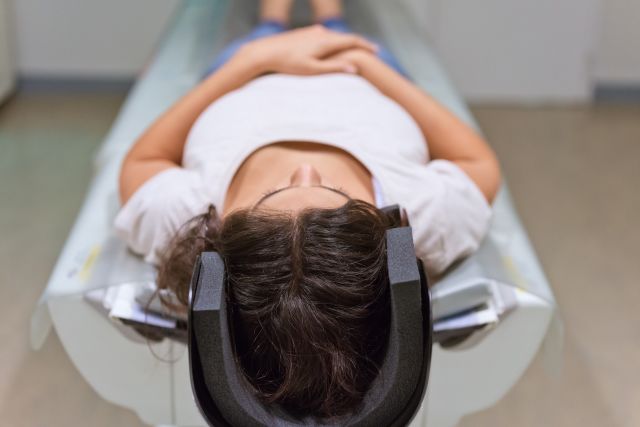Multiple sclerosis (MS) means "many scars" and is so named because the disease process results in lesions or scars throughout the brain and spinal cord. MS is believed to be an autoimmune disorder—a disease where an abnormal response by the immune system mistakenly sees healthy cells as foreign substances it must attack. MS causes damage to the nervous system, and as a result, the nerves are unable to communicate the necessary information to perform normal functions.
What are the symptoms?
Multiple sclerosis can cause a wide variety of neurological problems and symptoms. For many, the initial symptoms are vision problems, such as seeing double, blurred vision or red-green color distortion. Other common symptoms of MS include fatigue, numbness, a prickling or “pins and needles” sensation, pain, muscle weakness, problems with balance and coordination, problems with bladder control, sexual dysfunction, cognitive difficulties (such as problems with memory or reasoning), emotional changes and depression. Symptoms and the severity of symptoms will vary from person to person.
Who does MS affect?
Women are 3 times more likely to develop MS than men are. Most often, patients are diagnosed between ages 20 and 50, although it can strike individuals who are older or younger.
Caucasians, particularly those of northern European ancestry, are more at risk. The incidence of MS increases as you move away from the equator, leading researchers to speculate that exposure to sunlight and vitamin D levels may play a role in the development of MS. Worldwide, about 2.8 million people are living with MS.
What are the different forms of MS?
Multiple sclerosis is classified into four common patterns, depending on how it strikes, how often it flares up, and how it progresses. Knowing what type of MS you have is important when deciding on treatment.
- Relapsing-remitting MS (RRMS): RRMS is the most common form of MS. In this form, flare-ups or relapses occur and may last for days or months, after which there is complete or near-complete recovery. Incomplete recovery with no progression of disease is still considered to fall within this pattern of MS.
- Secondary-progressive MS (SPMS): Relapses and partial recoveries may occur with this type of MS, but neurologic function gets progressively worse with time. Many people with RRMS eventually develop this form of the disease. The disease steadily progresses with each attack.
- Primary-progressive MS (PPMS): Primary progressive MS affects about 15 percent of people with MS. Isolated attacks rarely occur with this form of MS. Instead, right from the onset, the disease progresses steadily, with no remission.
- Progressive-relapsing MS (PRMS): With this rare type of MS, symptoms worsen steadily, but patients also experience flare-ups.
How is MS treated?
There is no cure for MS, but there are numerous treatments available that can help manage attacks, slow disease progression and improve the quality of life for people with this disease. Treatment will depend on what type of MS a person has, as well as symptoms, severity, other health conditions and many other factors. Deciding on a treatment plan involves working closely with a healthcare provider.
Disease-modifying therapies (DMTs) are drugs that modify how the immune system works, and may reduce MS activity and slow disease progression. Additionally, other therapies may be prescribed to help patients cope with symptoms, such as pain, fatigue and bladder/bowel control problems. Physical therapy, occupational therapy and cognitive rehabilitation are often used to help patients with the limitations and challenges that arise from MS. Eating well, avoiding damaging habits like smoking and remaining physically active are important parts of maintaining overall health while living with MS.





